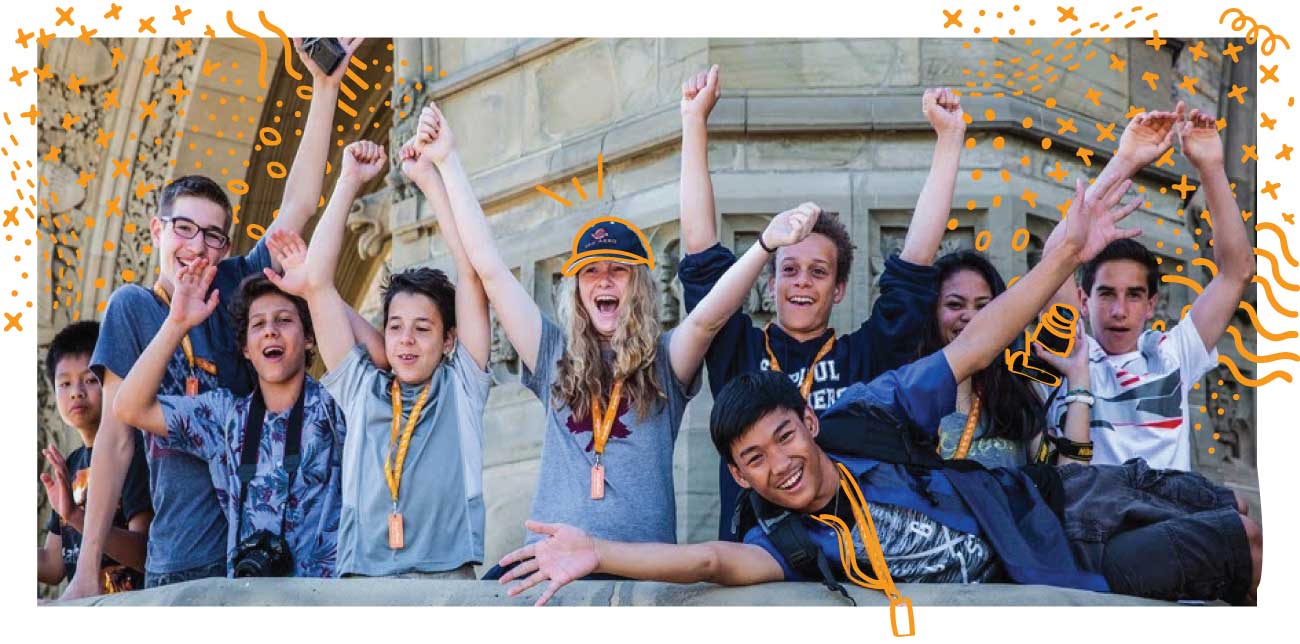Use these classroom resources to supplement your New France lessons by teaching Canadian history through videos, podcasts, articles, and activities. We have included resources to help your students learn about the role of women in the new colony, the history of Indigenous communities settled long before European arrival, and games to aid understanding of habitant living conditions, as well as how trading posts worked.
Use these classroom resources to supplement your New France lessons by teaching Canadian history through videos, podcasts, articles, and activities.
Overview
New France covers more than two centuries of Canada’s history, from 1534 to 1759, starting with the first known Indigenous villages and ending with the Battle on the Plains of Abraham. The desire for a new and exciting life led to exploration, fur trading, voyages, and many wars. The Canadian Museum of History has a wonderfully comprehensive Virtual Museum of New France. This is a great site to refer to at any point during lessons of New France, as the Virtual Museum covers everything from explorers to economic activities such as the fur trade, to daily life, as well as providing many additional links for further research and activities. Students can freely browse through the website to gain a better understanding of any topic they choose.
Stadacona and Hochelaga
Prior to European arrival on the shores of the St. Lawrence, Canada was inhabited by many Indigenous Peoples. Jacques Cartier’s first voyage in 1534 brought him to the mouth of the St. Lawrence where he encountered some Iroquois fishing and began to form a relationship with chief Donaconna. On Jacques Cartier’s second voyage in 1535 he found the village of Stadacona, in the location of present-day Quebec City. The people of Stadacona told him of other settlements down the St. Lawrence River. This led Cartier to travel further and find the village of Hochelaga, on the site of present-day Montreal. The village of Hochelaga was instrumental in Cartier’s explorations, guiding him up Mont Royal, he was able to see the rapids of the St. Lawrence River which would prevent his further travels and send him back to France. His journey home was then delayed by a harsh winter, which Cartier and most of his crew would only survive thanks to the people of Stadacona. Check out this podcast by Canadian History Ehx to learn more about these villages and what may have happened to them.
Activity Idea: Have your students view the Interactive Content at Four Directions Teachings. Here they can learn about the five distinct and original First Nations of Canada and listen to teachings of their cultures, shared by their elders. Four Directions Teachings also has learning activities for each First Nations community.
Samuel de Champlain
Known as the Father of New France, Samuel de Champlain was an explorer, cartographer, and solider. Most famously known for founding New France, Quebec as we know it today, and for his explorations of northern New York, the Ottawa River, and the eastern Great Lakes. The video above summarizes Samuel de Champlain’s journey of founding New France in 1608 and being the chief person responsible for administering the colony for many years. He created friendly alliances with many First Nations in the area which allowed for expansion and growth of the fur trade.
Seigneurial System
The seigneurial system was the way in which land was divided in New France. These plots of land were divided perpendicular to the St. Lawrence River and other waterways, this allowed for each plot to have access to water which was needed for many daily tasks. Each plot of land in rural New France was owned by a seigneur and he would offer sections of his land to families, who were known as habitants. The habitants would live on their piece of land, farm it for food, and pay taxes to the seigneur. This was how all newcomers to the colony lived. This system created communities and built up the economy. Do not be fooled though, this was a difficult life, full of many challenges and hard work.
Activity Idea: To give your students a better understanding of this land system and the struggles the habitants of New France faced, have your students play the board game style Habitant Game. The game is played in groups and will require students to clear, plant, and harvest their land, while surviving challenges.
Slavery in New France
Thoughts of slavery are normally linked to cotton and tobacco fields in the United States, however, slavery was practiced and persisted in Canada until 1834. Slavery in New France began in 1629 with the purchase of the first enslaved person, an 8-year-old boy from Madagascar or Guinea named Olivier Le Jeune. Over this time period, historians believe there were a total of 4,200 enslaved people in New France, one third being of African descent and two thirds of Indigenous descent.
Activity Idea: To help students understand the conditions that enslaved people were subjected to, have students complete this Mystery Quest activity. The Mystery Quest follows the case of Marie-Joseph Angélique, an enslaved black woman, who was accused of burning down Montreal in 1734 and asks students to examine the lives of commoners against the lives of enslaved individuals, by looking though documents from that time.
Women in New France
Women played an important role in the success of New France. The new colony was struggling from a small population and the solution to this was to send over a large group of women. These 700 or so woman were named ‘les filles du roi’ or the king’s daughters, as they were sent to New France with a dowry from the King. Their job was to find a husband and become a mother, as this would help the colony flourish. You can learn more about les filles du roi here. Although most women traveled to New France for the purpose of procreation, Ursuline nuns made the journey in order to educate the colony. Listen to the podcast ‘Nuns on the Frontier’ by Curious Canadian History to learn more about how they became fixtures in New France society.
The Fur Trade and Voyageurs
The fur trade was a large commercial enterprise driven by fashion and wealth. The video above is a great short summary of events. The settlers in New France had begun trading metal and cloth with the Indigenous peoples, who in turn offered them furs and meats. The settlers noticed that the furs, specifically that of beavers, were a highly sought after and profitable product in Europe. This potential for wealth led to the creation of trading posts, the Hudson’s Bay Company and the job of a voyageur. Voyageurs were men hired to make the long journeys to transport goods to trading posts. This educational guide outlines the life of a voyageur, you can also check out this great video by the National Film Board which portrays what one of their trips would have been like. This continued trade and demand allowed for further exploration and settlement of Canada, helping to build Canada and make it wealthy.
Activity Idea: If you are looking for a fun activity to do with the class all together, try the game ‘I Have... Who Has?’ which lets you build a timeline of the fur trade. Another fun activity which can be done in groups or as a class is the Trading Post Game. The game mimics a trading post where students can search for and then trade in pelts for goods.
1701 - Great Peace of Montreal
The competitive fur trade led to many wars being fought over the control of resources. The conflicts were fought between the Iroquois, comprised of Five Nations, the Huron-Wendat and Algonquin, and the French. Champlain had formed alliances and established trade with the Huron-Wendat and Algonquin nations, who were natural enemies to the Iroquois. This placed New France right in the middle of a large conflict for land and resources; resources on which New France was now beginning to rely as well. These wars known as the Iroquois Wars or the Beaver Wars finally ceased in 1701 when the Five Nations and French signed a peace treaty. The treaty was signed by the governor of New France and 39 First Nations.
Activity Idea: The Canadian Museum of History has a great interactive virtual exhibit on the Great Peace of Montreal. Students can click through various pages of the treaty document with explanations of passages, signatures, and artifacts.
Battle of the Plains of Abraham
The final few moments of New France were at the Battle of the Plains of Abraham. The French and British colonies had been at war for several years, fighting over territory. The British troops led by General Wolfe invaded the French troops led by General Montcalm, on the Plains of Abraham. The entire battle is outlined in the short video above. This thirty-minute battle was a pivotal point in the history of Canada, as the French surrendered Quebec to the British, which marked the end of New France and ultimately led to the surrender of Canada to British rule.
Activity Idea: Have your students complete this crossword puzzle full of facts about the Battle of the Plains of Abraham. You can access the crossword here and the clues here. Another activity idea is this virtual and historic landscape of The Plains of Abraham. This virtual walkthrough is a replica of the city in 1759, students can enter buildings, view the entire battlefield, and complete missions. It is free of charge to those who own Minecraft.
Brightspark: New France Kahoot!
After watching the above videos, challenge your class to a Kahoot! game to reinforce the key facts of the events of New France.
- Go to Kahoot.com
- Click "login" or "create account" on the top right
- Once logged in, go to the discover tab next to the home button
- In the search field, enter “Brightspark: New France”
- Click the “Brightspark: New France” Kahoot
- Hit “play” and select either Teach (live game where everyone plays at the same time) or Assign (students play at their own pace with a deadline attached to it)
- Send the link and pin to your students (students do not need an account to play)
If you are interested in learning more about New France or visiting the historical sites and monuments in person, consider taking your class on a trip to Quebec City to provide students with a more immersive experience.
![History of New France Classroom Resources [Classroom resources] featured image](https://www.brightsparktravel.ca/hubfs/AdobeStock_64867532.jpeg)


![Celebrating Earth Day in Canada [Classroom Resources]](https://www.brightsparktravel.ca/hubfs/BSCA/Blog/4321Z_ecology%20x%201920.jpg)


